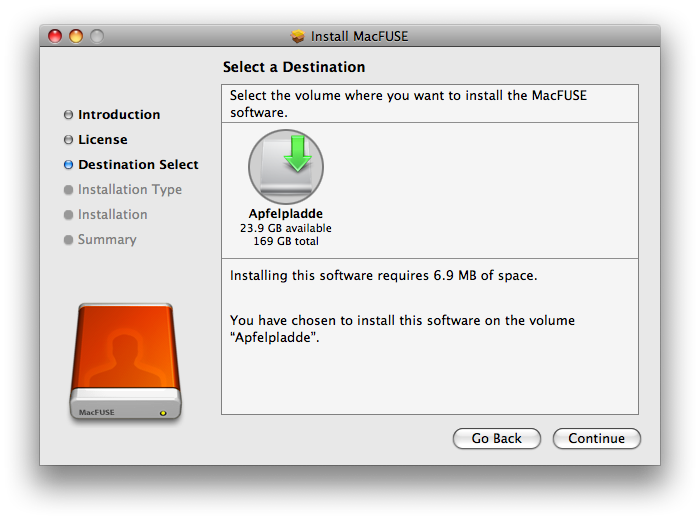

- #MACFUSE UNABLE TO CONTACT UPDATE SERVER MAC OS X#
- #MACFUSE UNABLE TO CONTACT UPDATE SERVER SERIES#
- #MACFUSE UNABLE TO CONTACT UPDATE SERVER MAC#
I dove into Fitss’ Law before on OSNews, in our series on Common Usability Terms (I’ll resurrect that series one of these days). Saying something like “Mac OS’ global menubar is better because of Fitts’ Law” is extremely shortsighted, and shows that you really don’t have a clue as to what Fitts’ Law really entails. Fitts’ Law is a horse, and it’s been beaten to death so many times the poor creature has been turned into a pulp of horse meat. Apple took a step into the right direction by going with bundles, but halfway during the baking of the cake they didn’t feel like it any more, and now they are serving their users with cake dough stuck in a cake shape. Many of these do not come with an uninstall option, and worse yet the (m)pkg packages simply cannot be uninstalled at all! You will need to hunt down each file it installed manually, which I’d hardly call intuitive. And this is where things start to go bad. Way too many applications use an installer – even some Apple ones – or come in (m)pkg format. In addition, this so-called intuitiveness is not respected by every application. You need specialised 3rd party applications for that. Many applications leave a trail of files in all sorts of directories that the drag/drop action won’t delete for you.
#MACFUSE UNABLE TO CONTACT UPDATE SERVER MAC#
Experienced Mac users will know – this is not the case.

Supposedly, it’s as easy as dragging and dropping the application bundle into the trash. With intuitiveness, the author is referring to the act of uninstalling applications on the Mac OS. These are issues that need to be addressed. When we dive into the looks department, Leopard may have brought great strides forward in consolidating the 5359375 different themes Tiger used, but there are still way too many different looking widgets that do the exact same thing in different applications. There are still notable exceptions though, such as the infamous ‘pill’ button in the Finder, which behaves completely different in the Finder than it does in any other Macintosh application, severely breaking Apple’s own HIG. Applications indeed behave quite similar to one another, and one shortcut key combination in application x will almost always produce the same output in application y. When it comes to behaviour, Apple is pretty high up on the consistency ranking. You see, consistency can be achieved in two ways: through behaviour and through looks. The author writes that “the whole OS and almost every application looks and feels the same, as if a single team developed the whole thing, thanks to Apple HI Guidelines.” This sentence requires some clarification. Let’s just follow the original list, shall we? I’m leaving out the ones in which the author is spot on. The issue with the list of the article in question is that many of the items on the list are not exactly examples of “Usability Highs” at all.
#MACFUSE UNABLE TO CONTACT UPDATE SERVER MAC OS X#
Mac OS X indeed does some things very, very right, just like many other operating systems and graphical environments do some things very, very right. An interesting article has been making its way around the internet the past few days, titled “ Top 10 Usability Highs Of Mac OS“.


 0 kommentar(er)
0 kommentar(er)
